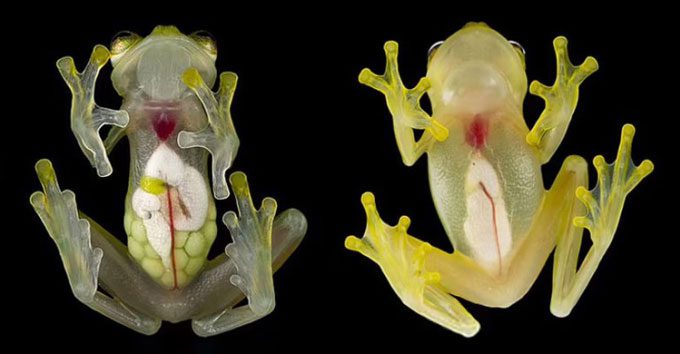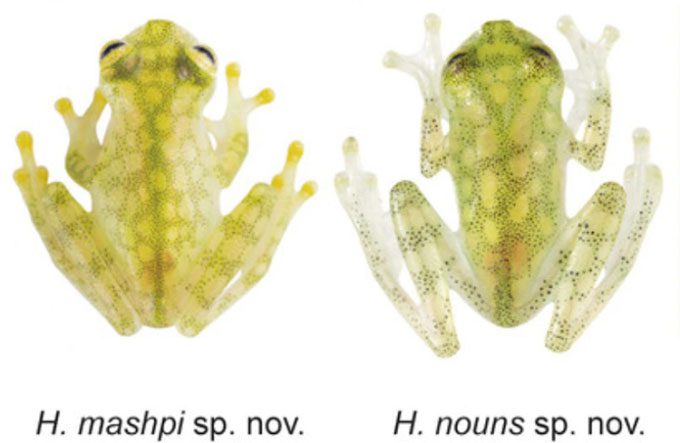Biologists Discover Two New Species of Glass Frogs with Transparent Bodies in the Valley at the Foot of the Andes Mountains in Ecuador.
Located less than 16 kilometers from Ecuador’s capital, Quito, the rugged slopes of the Andes are one of the most biodiverse yet vulnerable tropical regions in the world.

Hyalinobatrachium mashpi (left) and Hyalinobatrachium nouns (right). (Photo: Berkeley)
At the foot of the Andes lies the valley. The river flowing through it, called Guayllabamba, is at the center of the remarkable story of two newly identified species of glass frogs.
One of them, Hyalinobatrachium mashpi, resides on the southern side of the river within the Mashpi and Tayra Reserve, two adjacent private tropical oases covering an area of 2,510 hectares. The second species, Hyalinobatrachium nouns, lives on the northern slope of the valley in the Toisan mountain range, a steep isolated mountain population situated 20 kilometers from the first species’ discovery site.
Both creatures share many similarities. They exist at the same elevation, under similar temperature and humidity conditions. Both measure between 1.9 and 2.1 cm from snout to vent (a standard length measurement for amphibians).

Comparison of the dorsal sides of the two new species of glass frogs. (Photo: Berkeley).
Visually, their bodies are quite similar, with a green back dotted with black spots surrounding yellow patches, and a completely transparent belly revealing the heart, liver, digestive system, and ovaries (in females).
“Initially, we thought they were the same species, but upon further DNA analysis, we were surprised to discover significant genetic differences,” said Juan Manuel Guayasamin, the lead author of the study and an evolutionary biologist at San Francisco de Quito University.
Currently, only 156 species of glass frogs are known worldwide, primarily inhabiting the northern Andes and Central America, with 90% of them having their gene sequences decoded. H. mashpi and H. nouns differ genetically by nearly 5%, a significant distance for such similar amphibian species.


















































